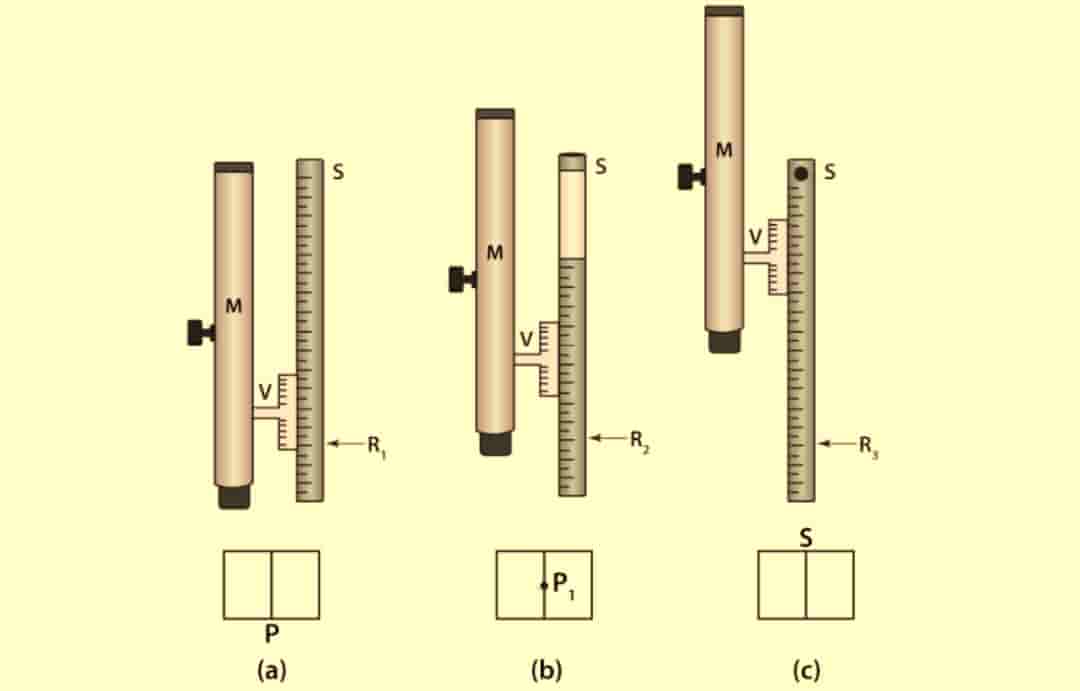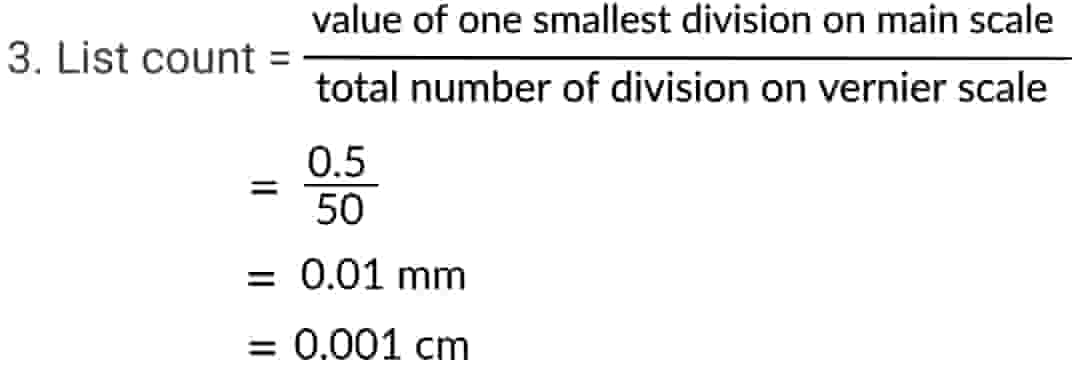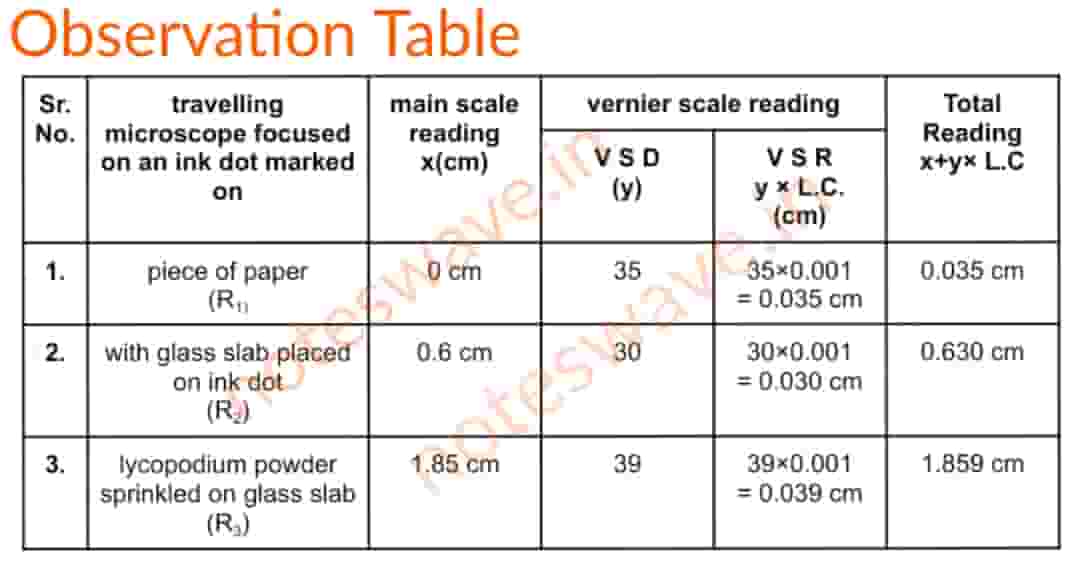Experiment – 6
Objective
To determine the refractive index of glass by using travelling microscope.
Apparatus required
A travelling microscope with vernier scale, a glass slab, white paper, a pen and lycopodium powder.
Formula Used

Diagram

Observations
1. Least count of main scale of microscope = 0.5 mm.
2. Number of division on vernier scale=50


Calculation

Result
The refractive index of the glass slab by using travelling microscope = 1.48
PRECAUTIONS
- Microscope once focussed on the cross-mark, the focussing should not be disturbed throughout the experiment. Only rack and pinion screw should be used to raise the microscope upward.
- Only a thin layer of lycopodium powder should be spread on the top of the slab.
- The microscope tube should be vertical.
- Microscope should not be shaky.
- Eyepiece should be adjusted so that cross-wires are distinctly seen.
- As far as possible, the rack and pinion screw should be moved in one direction only to avoid backlash error.
SOURCES OF ERROR
- The scale used in the microscope might be caliberation property.
- Microscope tube may not be exactly vertical.
- The lycopodium powder layer on the glass slab might be thick.
